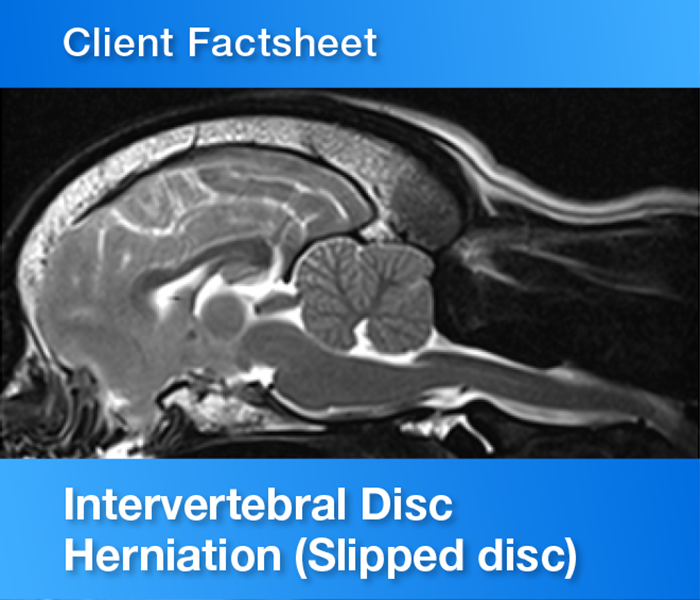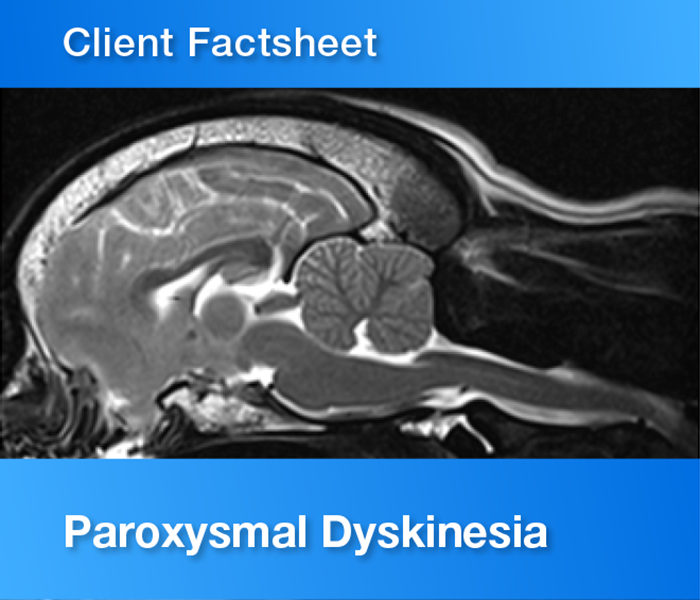
Seizures and epilepsy factsheet
Seizures (convulsion) are one of the most common neurological problems in dogs and cats and we know how much distress and anxiety they can cause. All of the cells in the brain communicate with chemical and electrical signals. Having seizures is not a disease in itself but the sign of abnormal brain function relating to this signalling process (imbalance between excitation and inhibition messengers in the brain).
Different types of seizure can occur in dogs and cats. The most common type is the generalised tonic-clonic epileptic seizure (also known as grand mal seizure). This type of seizure causes a loss of consciousness, involuntary movement, urination, salivation and defecation. Partial epileptic seizures affect only part of the body and are much more difficult to differentiate from non-epileptic seizures (particularly conditions called movement disorders). They may appear as muscle spasms/tremors, abnormal sensations or hallucinations. Dogs do not feel pain during a seizure and are largely unaware that they are occurring, but they may feel disorientated and confused afterwards for a short period.
Epilepsy means repeated epileptic seizures due to abnormal activity in the brain. It is caused by an abnormality in the brain itself. If the seizures occur because of a problem elsewhere in the body, for example a low sugar level, this is not epilepsy.
What are the causes and how is epilepsy diagnosed?
Seizures may occur due to an identifiable cause which can be found either inside the brain (intra-cranial causes) or outside the brain (extra-cranial causes). Extra-cranial causes of seizures include intoxication and blood disorders, caused for example, by kidney disease, liver disease, low sugar level or an under-active thyroid gland. This type of seizure is also described as reactive epileptic seizure. Diagnosis of extra-cranial causes of epileptic seizures is based on blood tests or a known history of access to a toxin.
Intra-cranial causes are divided into idiopathic and symptomatic epilepsy. In symptomatic epilepsy, the epileptic seizures are a sign of a disease in the brain. This disease might be a brain tumour, an inflammation or infection of the brain (encephalitis), a brain malformation, a recent or previous stroke or head trauma. Epileptic seizures may be the only sign of illness in the brain, or there may be other signs (circling, blindness, wobbliness, restlessness and/or sleepiness). To confirm a diagnosis of symptomatic epilepsy an underlying brain disease must be identified using MRI or CT scans of the brain and tests on the fluid surrounding the brain (CSF analysis).
When an underlying cause cannot be identified, idiopathic (or primary) epilepsy is the presumed diagnosis. No single test can tell if an animal has idiopathic epilepsy. It is what we call a ‘diagnosis of exclusion’ as multiple tests are required to exclude all other causes (blood tests, urine tests, brain imaging and spinal fluid analysis). Idiopathic epilepsy is most likely in young dogs (six months to six years of age) that are normal between the seizures.
Idiopathic epilepsy most likely has a genetic cause, but vets have rarely been able to identify the gene responsible in individual breeds; however, several breeds are known to have a higher ‘familial’ risk of epilepsy. Most epilepsies are ‘poly-genic’, involving mutations in lots of genes. This means that unlike ‘recessively’ inherited genetic diseases, breeding to prevent epilepsy is very difficult and primary epilepsy can be diagnosed in any individual dog of any breed despite multiple normal generations and litters.
How can epilepsy be treated?
Epileptic animals are born with the condition and cannot be cured. Idiopathic epilepsy is a chronic and occasionally progressive disease that will need to be managed. However, it is possible for most epileptic dogs and cats to have an excellent quality of life. Rarely, an animal may have a single seizure and not seizure again. An animal that has more than one seizure is expected to have more frequent or severe seizures in the future.
Despite treatment, epileptic animals are still likely to suffer intermittent seizures. Full remission may occur with treatment, but our goal in the majority of animals is to reduce the frequency of seizures by at least 50% within a four-week period. The severity of seizures should also reduce. 25–33% of dogs with epilepsy will require more than one medication in order to control their seizures.
There is some evidence in dogs that earlier treatment is associated with a better outcome. We normally recommend epilepsy is treated when more than two seizures occur in a six-month period. Once treatment for epilepsy starts it is likely to be continued for life and therefore the decision to start treatment should be carefully weighed. Other indications to start treatment include:
- Having very severe seizures or a cluster of seizures (eg more than one seizure in a 24-hour period), whatever the frequency.
- Seizures are increasing in frequency or severity.
- An underlying brain disease has been identified as the cause of the seizures.
What drugs can be used to treat epilepsy?
There are many different anti-epileptic drugs (AEDs) available for the treatment of epilepsy in dogs. Your veterinary neurologist or primary care vet will determine which AED is suitable based on the type and number of seizures your pet has suffered, but also on licensing, formulation, and cost considerations.
Two drugs are licensed for the treatment of idiopathic epilepsy in dogs; Phenobarbital (commonly prescribed under the trade name ‘Epiphen’ and ‘Soliphen’…) and Imepitoin (prescribed under the trade name ‘Pexion’). Potassium bromide (prescribed under the trade names ‘Epilease’ and ‘Libromide’) is licensed for refractory epilepsy in dogs. We have experience with many other AEDs, that are only licensed in people, for use in dogs (such as Levetiracetam, Zonisamide, Gabapentin, Pregabalin, Topiramate and Felbamate). These medications are only used in special circumstances and are not recommended in the first-line treatment of epilepsy in dogs.
The first-line treatment in cats is usually either Phenobarbital or Levetiracetam. Potassium bromide, however, should not be given to cats due to a high risk of potentially life-threatening side effects.
With most AEDs side effects of treatment can be expected to occur. These side effects are normally worse in the first four weeks of treatment and their severity should decrease with time. Common dose-dependent side effects include increased thirst and hunger (consequently urination and weight gain), lethargy, panting, hyper-excitability and possibly wobbliness. Your veterinary neurologist or primary care vet will discuss with you what side effects may be expected with medication.
How do you monitor response to treatment?
Whether medical or surgical treatment is advised for this condition depends on several facts. It is very important to keep a seizure diary for your pet. The diary should include the date, the number of, duration and appearance/severity of seizure(s), whether there was any obvious precipitating cause, whether abnormal behaviour was seen in the period after a seizure (post-ictal period). Sharing these diaries with your veterinary neurologist or primary care vet will assist them in assessing whether treatment is reaching its goals. In addition, it will help to de-emotionalise the seizure experience if you and your family understand what should be done when they occur. During a seizure:
- Move any objects from around your pet that they may injure themselves on.
- Turn off the lights.
- Begin monitoring and recording their duration and severity.
Never be tempted to put your hands in or around your pet’s mouth. Dogs may bite during or after a seizure as they will not recognise you. It is understandable that you will want to comfort your pet but only hold/pet them if they have stopped actively seizing and if they are seeking attention. If your veterinary neurologist or primary care vet has prescribed rectal diazepam this can be administered as instructed if it is safe to do so. Contact your vet as soon as possible if:
- Your pet is actively seizing for more than two minutes.
- Your pet has more than two seizures in a 24-hour period.
- Your pet is showing recurrent twitching/tremoring.
Occasional visits to your vet may be required during the course of treatment. Some AEDs will be processed (e.g. metabolised) by the liver. This metabolism can increase with time, meaning higher drug dosages may be required to maintain the same concentration of the drug in the blood. Your vet may suggest blood tests every few months to assess the concentration of the AED in the blood, or to assess the function of the liver. How often this is required will be dependent on the individual’s response to treatment.
Cluster seizures occur when there are more than two seizures in 24-hours. Status epilepticus occurs when dogs do not recover between seizures (ie go back to being normal within 30 minutes) or have seizures lasting more than 5 minutes. In both instances your vet should be contacted. With clusters we may not change medications immediately but we should note the events.
If you have any concerns about your dog or their treatment, do not hesitate to contact your vet.
Related factsheet: Commonly used anti-epileptic drugs in dogs and cats


